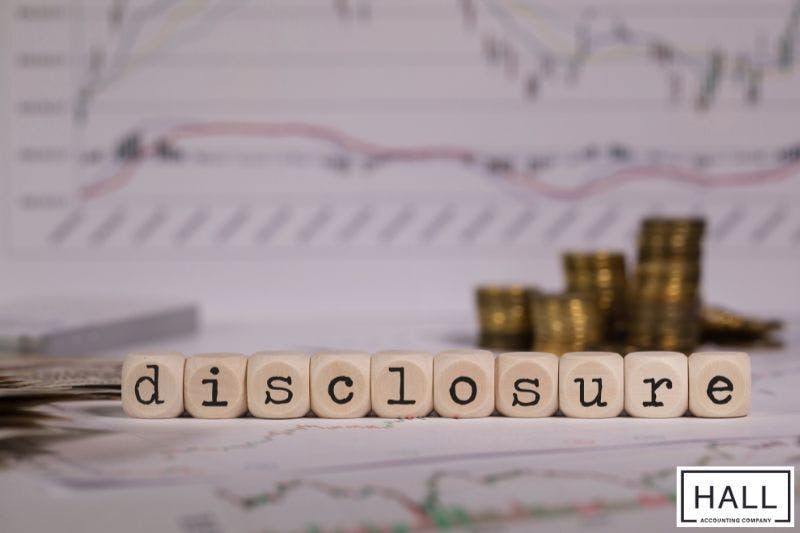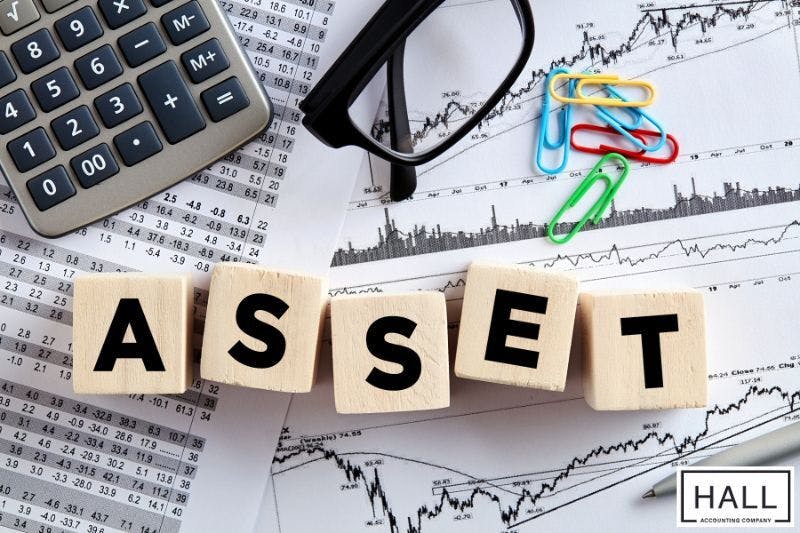
The ASC 842 standard issued by the Financial Accounting Standards Board (FASB) has changed the way lease accounting is recognized. We help you understand how to handle 'right of use' assets and lease liabilities on your balance sheet. Whether you have operating leases or finance leases, the principles are the same: leases must be recorded on the balance sheet to comply with this standard.
Understanding ASC 842 can seem daunting but breaking it down into clear and simple steps makes it easier to digest and that’s what we aim to do with this guide. Let’s start with the basics.
What is ASC 842?
ASC 842 is a new lease accounting set of rules dictating how businesses should account for leases. Leases are agreements where you pay to use an asset that does not belong to you. Think office space, a delivery van, office equipment, or machinery. Previously, many financial leases were not shown on the balance sheet but ASC 842 changed all that. Now, all lease liability can be shown which provides a much clearer picture of your financial obligations.
What is a ‘right-of-use’ asset?
When you lease something this gives you the right to use that asset for a specific lease term. You are paying money to use an asset that effectively belongs to another person or company. This right is considered by the FASB as an ROU asset. Alongside the asset, you will also recognize a lease liability which shows you have an obligation to make a lease payment. Let’s take a closer look at some of these concepts.
Lease liability
The lease liability represents the present value of future lease payments. It is initially based on the finance lease terms, including any lease incentives and initial direct costs incurred.
Initial direct cost
These are incremental costs directly attributable to negotiating the terms of a leased asset. All such costs are included in the initial measurement of the ROU asset.
As a business owner, you may decide to lease a piece of machinery for 3 years. The annual lease payment is $10,000, and your discount rate is 4%. To secure the lease, you incur some direct costs.
Legal fees: You hire an accountant to review the lease agreement. The fees amount to $1,000.
Administration fees: You pay $500 for the administration and finalization of the lease terms.
Installation fees: You pay $1,500 to install the machinery when it arrives.
The ROU asset is initially recognized at $30,624, including the present value of the lease payments ($27,624), plus the initial direct costs of $3,000.
The lease liability is $27,624 and cash is reduced by $3,000 in recognition of the direct costs.

Incorrectly reflecting these assets in your journal entries, general ledger, trial balance, and balance sheet can lead to an inaccurate reflection of your financial obligations. If you need help with these - and other difficult financial entries - Hall Accounting Company offers bookkeeping services for SMEs. Contact us today.
Let’s continue with another example, and then we take you step-by-step through the process of recognizing an ROU asset.
Handle an ROU asset step-by-step
Imagine a business leases office space for 5 years. Annual lease payments amount to $12,000 with a discount rate of 5%.
Step 1 - Calculate present value
Present Value of Lease Payments = $12,000 * [1 - (1 + 0.05)^-5] / 0.05 = $51,954
Step 2 - Journal Entry
DR Right of Use Asset $51,954
CR Lease Liability $51,954
After recognizing the ROU asset and the lease liability you need to account for them over the lease term. This involves amortizing the ROU asset and reducing the lease liability as you make payments. Interest on the lease liability is calculated using an effective interest method.
Step 3 - Monthly Entries
The lease asset is amortized over the lease term using a straight-line method.
Amortization Entry | |
DR Amortization Expense $866 | CR Accumulated Amortization $866 |
Lease Payment Entry (assuming a monthly payment of $1,000 with $217 interest) | |
DR Lease Liability $783 | |
DR Interest Expense $217 | |
CR Cash $1,000 | |
Step 4 - Presentation on Balance Sheet
Non-current Assets: | |
Right of Use Asset (net of amortization) | $44,120 |
Current Liabilities: | |
Current Portion of Lease Liability | $9,396 |
Non-current Liabilities: | |
Lease Liability (net of current portion) | $34,724 |
All your financial statements must reflect the lease expense accurately. This includes the income statement and the cash flow statement.
Compliance and disclosure associated with ASC 842

ASC 842 requires you to make certain disclosures in your financial statements. These disclosures provide additional details about your lease, ensuring compliance with the lease accounting standard.
Required disclosures
The following information must be provided along with the Balance Sheet.
Lease commencement date
Description of lease terms and conditions
Amount of ROU assets and lease liabilities, lease expense, and cash flow information
Analysis of future lease payments
Disclosure Example
Notes to Financial Statements:
- The company has non-cancellable operating leases for office space. The leases typically run for a period of five years, with an option to renew the lease after that date. Lease payments are subject to an annual increase of 2%.
- At December 31, 2023, the carrying amount of the right-of-use asset was $44,120 and the corresponding lease liability was $44,120. Lease expense for the year was $12,000, which includes $10,392 in amortization and $1,608 in interest expense.
-The following is a maturity analysis of the undiscounted lease payments:
- 2024: $12,000
- 2025: $12,240
- 2026: $12,484.80
- 2027: $12,734.50
- 2028: $12,989.19
Lease modification
Sometimes a lease can be modified or reassessed and you need to know how to account for these changes.
Lease modifications
When a lease is modified, the lessee must reassess the lease liability using a revised discount rate and adjust the ROU asset accordingly. Suppose that you originally leased machinery for 3 years and later extended the lease by another 3 years. You will need to reassess the present value of the new lease payments and adjust the ROU asset and lease liability to reflect the extension.

Gain a deeper understanding of your business’s financial health and future potential with our strategic financial analysis. Contact us today to discover how our insights can guide your business towards achieving its goals. Let our fractional CFO tailor a strategic plan that turns insights into action and goals into reality.
That brings us to the end of the step-by-step section of this guide. If you have questions about the concepts or differences between operating and finance leases, stay with us as we explore some key aspects of handling ASC 842 correctly.
Frequently Asked Questions
What are the differences between an operating lease and a finance lease?
The difference between an operating lease and a finance lease lies in the transfer of risks and rewards associated with the leased asset, as well as the accounting treatment for each type under ASC 842.
Operating lease
An operating lease is a lease where the lessor retains significant risks and rewards of ownership of the underlying asset.
The lessee will recognize ROU assets and operating lease liabilities on the balance sheet and lease payments will be recognized as a lease expense on a straight-line basis. The ROU asset is amortized and the lease liability is reduced as payments are made. These are often short-term leases where the asset is not intended for purchase by the lessee at the end of the lease term. A lease incentive is often offered to the lessee to induce them to sign the lease.
Since the risks of ownership are retained by the lessor, a business benefits in that it does not take on the cost of maintenance repairs, or replacements.
Finance lease
A finance lease is where the lessee maintains control of the underlying asset. This usually means that all the risks and rewards of ownership are transferred to the lessee. ‘Right-of-use’ will become ‘right-of-ownership’ at the end of the lease contract.
Similar to the operating lease, the finance lease is recognized as an ROU asset and lease liability on the balance sheet. Finance lease ROU assets are amortized over the useful life of the asset.
Interest expense on the lease liability and amortization expense on the ROU asset are recognized separately in the income statement.
A lease is classified as a finance lease if it meets the following criteria:
The present value of lease payments amounts to substantially all of the fair value of the asset.
The underlying asset is specialized and not expected to have an alternative use to the lessor at the end of the lease term.

Is a ‘right-of-use’ asset a tangible asset?
No. It is considered an intangible asset on the balance sheet because it reflects a contractual right to use a tangible asset rather than the ownership of the tangible asset itself. The difference can be explained as follows:
Tangible assets: Physical in nature and can be touched, seen, and quantified (machinery, vehicles, equipment, property).
Intangible assets: Non-physical in nature and represent legal rights and benefits (patents, trademarks, right-of-use assets)
Is a ‘right-of-use’ asset a current asset?
No. It is not considered as a current asset because a current asset is expected to be converted to cash, sold, or consumed within one year. Non-current assets however are expected to last longer than one year.
Is a ‘right-of-use’ asset a financial asset?
Financial assets are assets that derive value from a contractual claim and typically include cash, accounts receivable, bonds, stocks, and other securities. For this reason, an ROU asset is not considered a financial asset.
How do you determine the discount rate for lease liabilities?
The discount rate is the rate implicit in the lease contract. If this rate is not readily determined you should use your incremental borrowing rate. This is the rate you would have to pay to borrow the funds necessary to obtain an asset of similar value.
Are short-term leases exempt under ASC 842?
Yes. Short-term leases (less than 12 months and no purchase option) are exempt from balance sheet recognition. Instead, these lease payments are recognized as an expense.
Conclusion and Final Thoughts
The implementation of ASC 842 significantly impacts the way you account for leases, making it imperative that you understand how to recognize ROU assets and lease liabilities.
By following this step-for-step guide and considering the additional aspects of lease accounting that we discussed, you can confidently tackle the recording of these financial transactions.
If you need further assistance, you can benefit from outsourcing your accounting to Hall Accounting Company. By offloading the responsibility of keeping your financial transactions current and organized, not only is your time freed up, but you also reduce the risk of errors and discrepancies that could potentially lead to costly financial missteps or compliance issues.
This level of meticulous financial oversight ensures that you are always prepared for audits and can make financial decisions with confidence, ultimately contributing to the stability and long-term success of your business.
We happily offer you a free initial consultation with no further obligation to discuss your accounting needs.
Schedule a free consultation